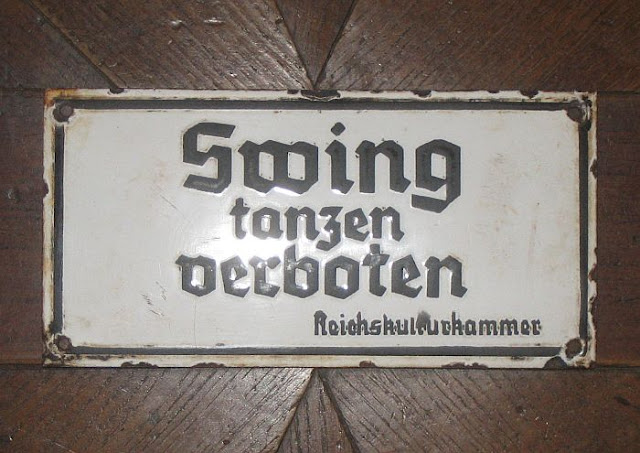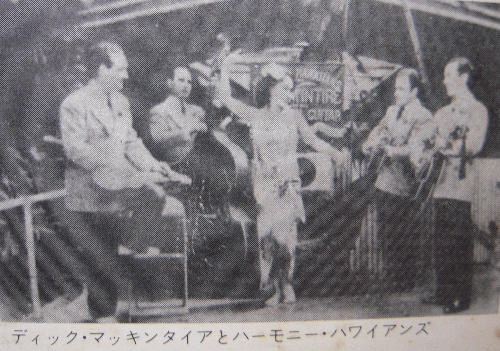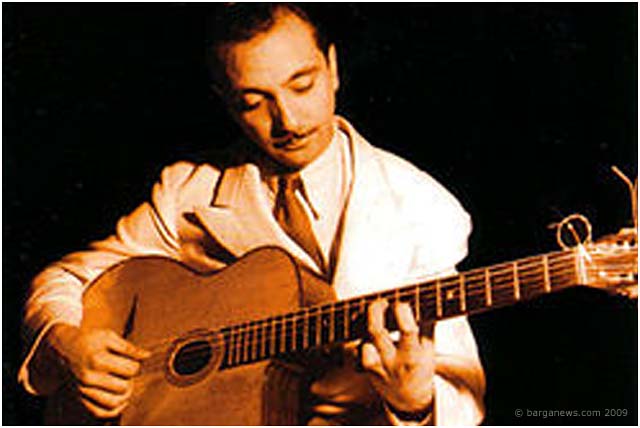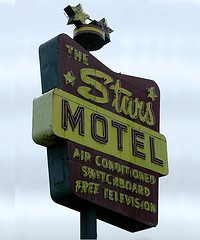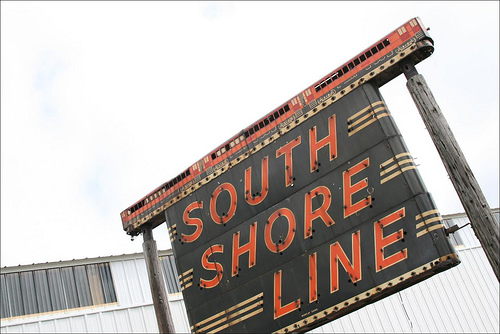Search This Blog
Tuesday, June 28, 2011
Monday, June 27, 2011
The beginning of a series of vids and travelogues of Chicago and other places.....
Just for fun.....let's start with Chicago in the 1930s -'50s..............
Labels:
chicago
Bill Haley Part 6.................w/ The Comets, The Saddlemen, and The Four Aces of Western Swing
Here's Part 6.................
(Thanks for the) Summer souvenirs- w/ The Comets
A sweet bunch of roses-Lou Graham on vocals w/ The Saddlemen
I'm crying-Bill and Loretta w/ The Saddlemen
Pretty baby-Bill and Loretta w/ The Saddlemen
Somebody else is taking my place-w/ The Comets
Stand up and be counted-w/ Johnny Clifton and his String band
Stop beatin' around the mulberry bush-w/The Comets
Straight jacket (instrumental)-w/The Comets
Strictly instrumental-w/The Comets
Sunday down in Tennessee-w/ The Four Aces of Western Swing
Sundown boogie-w/ The Saddlemen
Susan VanDusen-w/ The Saddlemen
Sway with me-w/The Comets
Sweet Sue, just you-w/The Comets
Teardrops from my eyes-w/ The Saddlemen
Tearstains on my heart-w/ The Saddlemen
Teenager's mother-w/The Comets
Ten Gallon Stetson-w/ The Saddlemen
Ten little indians-w/The Comets
Tennessee border-w/ The Four Aces of Western Swing
The walkin' beat-w/The Comets
Thirteen women (and only one man in town)-w/The Comets
Tonight's the night-w/The Comets
Too many parties and too many pals-Tex King on vocals w/ The Four Aces of Western Swing
Two hound dogs-w/The Comets
Two shadows-w/The Comets
Vive Le Rock and Roll (w/ Caterina Valente)-w/The Comets
Vive Le Rock and Roll-w/The Comets
What'cha gonna do-w/The Comets
When the Saints go marching in-w/The Comets
Where did you go last night (false start) 2-w/The Comets
Where did you go last night (false start) 3-w/The Comets
Where did you go last night (false start)-w/The Comets
Where did you go last night (incomplete take)-w/The Comets
Where did you go last night-w/The Comets
Whispering-w/ The Four Aces of Western Swing
Whoa! Mabel!-w/The Comets
Why do I cry over you-w/ The Saddlemen
Wooden shoe rock-w/The Comets
Wreck on the highway-w/ The Four Aces of Western Swing
Labels:
bill haley
Sunday, June 26, 2011
Hank Penny Part 3..............Jest a-rockin' and-a swangin' ;)
Here's Part 3...........Part studio recordings/part transcriptions
Alabama jubilee
Big footed Sam
Crazy rhythm
Cross your heart
Don't start breathing down my neck
Flamin' Mamie
Hold the phone
Hot time mama
I like the wide open spaces
I want my rib
I'm not in love (just involved)
I'm waiting just for you
Kiss me honey (but take your time)
Mister and Mississippi
No muss, no fuss, no bother
Peroxide blond
Progressive country music for a Hollywood flapper
Rabbits don't ever get married
Red hot mama and ice cold papa
Red hot papa
Remington ride w/ Herbie Remington
Rock of Gibraltar
The mink on her back
The Penny Opus No. 1
http://www.megaupload.com/?d=FXBO5VB9
Labels:
hank penny
Fud Candrix Part 1..................
Fud Candrix
I attempted to translate this from a Belgian website: http://www.erfgoedceltongeren.be/product.php?prodid=187&catid=42&lang=NL, so I appologize if their are any mistakes.....
Jazz music, which originated around 1900 in the United States, blew after World to Europe. In the story of the European jazz Belgium plays a central role. One of the biggest Belgian jazz musicians of all time was Fud Candrix (1908-1974).
Alphonse Marie Alexis - Fud - Candrix was born on July 17, 1908 Tongeren, Born into a musical family. He began his musical studies in his hometown. After his compulsory education his parents sent him to the Liège Conservatory, for music theory and violin. After his studies, he followed his brother Jef to Brussels, where he immersed himself in jazz. He was a very talented tenor saxophonist and be asked to perform in Belgium and abroad (Algeria, Germany, France, Italy, Morocco, Netherlands).
After he had fulfilled his military service in 1934-1935, he founded his first band. In that period also began a long collaboration with the German label Telefunken. During the mobilization he was leader of the orchestra of the Werk Koningin Elisabeth, for musical entertainment for the Belgian soldiers. In 1940 he founded a big band, which became the most successful band he ever led. They played at home and abroad.
After the war was the band broke up He remained, however, active and with orchestras. He died on April 12, 1974 in Brussels. Fud Candrix was a brilliant bandleader and a very talented tenor saxophonist whose style recalled those of the American jazz musician Fud Livingston - hence his nickname.
The Belgium bandleader and saxophone player Marie Alexis “Fud” Candrix was born on July 17th, 1908 in the idyllic countryside of the village Tongeren. After school, he started to study violin and music composition at the conservatory of Luik (Liège). During his studies Fud Candrix tried to start a career like his elder brother Jeff, who used to be a successful bandleader and saxophone player in Brussels during the Twenties. He followed his brother to the Belgium capital to learn clarinet and saxophone in the style like his famous idol Coleman Hawkins, whose records both brothers collected.
After a while Fud Candrix became such a virtuous player on the tenor sax that he was able to give concerts in France, Algiers and Morocco. Due to his aggressive style of blowing the saxophone he was nicknamed “Fud” after the Red Nicholls saxophonist Fud Livingston. Back in Brussels in 1930, he was hired by the bandleader Charles “Chas” Remue and toured with his band to the Netherlands. In 1932 Fud Candrix made his first attempt to found a Jazz band. He hired the black saxophone player Willie Lewis and the Belgium trumpet player Gus Deloof, with whom he continued working for many years.
In 1933 the Candrix Brothers’ Orchestra was founded. The band was inspired by the repertory and playing of the famous American Dorsey Brothers’ Orchestra. Their co-operation ended after only one year due to Fud’s military service.
After the service Fud Candrix started leading a new dance band and they had the chance to play in the “Lac aux Dames” Café in Belgium’s summer spa Oostende. Throughout the winter the young and successful orchestra performed in the “L’heure Bleue” dance club in Brussels.
Felix Faecq, a Belgium talent scout, encouraged Fud Candrix to record the jazz tune “The Oldest Swinger In Harlem” and sent it to the German record label “Telefunken”. They offered him a six year contract and started a series of American Swing tunes with the Candrix Band. They were a great supplementation to the labels exclusive Jazz dance orchestras: Heinz Wehner’s Swing band and Teddy Stauffer’s “Original Teddies”. BBC substantiates Candrix’ high standard by broadcasting “this fantastic European Swing discovery” in December 1937.
Although Fud Candrix is known as a saxophone player, in the summer of 1938 he made one single recording that is very exceptional: he played the old standard “I’ve Found A New Baby” on the violin. By using the same phrasing as he did on the saxophone his improvisation is very unique. The great jazz violin players of the Swing era Stéphane Grappelly and Joe Venuti used their own techniques so that Fud Candrix created a personal handwriting even by playing on strings.
Another non-typical recording is “Teasing The Piano” by “Coco”: Colignon on piano and just the Orchestra’s rhythm section. Colignon plays in a single note style like Count Basie who inspired many other Swing pianists with his own minimalistic style.
With the beginning of the war in the fall of 1939, the Candrix Band broke up. For a few months Fud Candrix lead an entertainment orchestra for the troops’ special services.
In 1940, during the German occupation in Belgium, Fud Candrix was allowed to establish a new band. Apart from some of the former musicians like Gus Deloof on solo trumpet, Lou Logist on sax and Louis Melon on second trombone joined the band. Maurice Giegas and Lucien Devroye were added to the brass section, Jeff de Boek, himself a bandleader, took over the drums in the new Candrix Orchestra. Tony Jongenelen sang a little German, and the Japanese singer Jane Miller, who sang solely in English, joined the band.
In the summer of 1942 the Candrix Big band performed in Berlin’s “Delphi-Palast” for two months. The orchestra showed all its know-how by not only playing German songs in hot arrangements, but also Swing compositions written by members of the Candrix band. Original titles were translated to harmless German names: “Harlem Swing” became “Moderner Rhythmus” (“Modern Rhythm”) and “Metro Stomp” became
“U-Bahn Fox” (“Subway Fox”).
“U-Bahn Fox” (“Subway Fox”).
Fud Candrix suffered from Nazi censorship. His recording of “U-Bahn Fox” from May of 1942 was forbidden, his singer Jane Miller was sent back to Belgium and the whole orchestra was forced to play just “good German dance music”. In June of 1942 a few German “Schlager” (pop songs) were recorded, featuring the retired singer Paul Dorn. This seemed to be a kind of “excuse” to the political system, but this was the lowest Swing Music level the Fud Candrix Orchestra ever recorded.
Here's part 1............
ABC (w/ Django Reinhardt)
After all these years
All you want to do is dance
Always
Am Potsdamer Platz (AKA) Place De Brouckere
Amapola
American Patrol
Anticipate that rhythm
At a Dixie roadside diner
At the woodchopper's ball
Aubade
Back room
Bei dir war es immer so schön
Belleville (w/ Django)
Blankenberge
Blaue KüsteBluebird in the moonlight
Broadway shuffle
Corrine Corrina
Cotton pickers congregation
Could be
Cross country hop
Dein ser mund de kleine Frau
Dixieland detour
Doggin' around
Du hast mir gerade noch gefelt
Eine kleine uhr in meinem herzen
Eisbrecher
The Donkey serenade
Labels:
fud candrix
OTR for the afternoon: 12-28-1945 The Borden Ginny Simms show w/ Frank Sinatra, and The Frank DeVol Orch.
Frank DeVol
Don Wilson
A nice one this afternoon....The NBC Borden Milk "The Ginny Simms Show", with guest Frank Sinatra, and the Frank DeVol Orch., and Don Wilson as MC.......enjoy!!
Don Wilson
A nice one this afternoon....The NBC Borden Milk "The Ginny Simms Show", with guest Frank Sinatra, and the Frank DeVol Orch., and Don Wilson as MC.......enjoy!!
Labels:
frank de vol,
frank sinatra,
ginny simms,
OTR,
radio
A Hawaiian music break....The music of Lani Mcintire and Dick Mcintire,,,,,,,,,,,
Lani McIntire (also known as McIntyre)
Lani McIntire, 15 December 1904 - 17 June 1951) was a Hawaiian guitar and steel guitar player who helped to popularize the instrument, which eventually became a mainstay in American country and western music.
McIntire achieved fame playing with Sol Hoopii in his "Novelty Trio" before heading his own acts, "Lani McIntire and his Aloha Islanders" and later, "Lani McIntire and his Hawaiians." His work with Jimmie Rodgers pioneered the Hawaiian guitar sound that laid the foundation for the steel guitar as a standard country instrument, influencing the likes of Hank Williams and Elvis Presley.
McIntire and his band also did a lot of work with Bing Crosby, notably on the original version of Blue Hawaii as well as Sweet Leilani, which was popularized in the 1937 movie, Waikiki Wedding, and won an Academy Award. McIntyre appeared in the films Dreams of Old Hawaii (1944), You're the One Rose (1943), Maui Chant (1943), and [[Paradise Isles (1943).
Dick McIntire
Dixon Ka 'aihue McIntire (04/06/1902 - 05/20/1951), made his mark as one of Hawaii's greatest steel guitarists. Dick recorded over 300 records backing Bing Crosby, Frances Langford, Ray Kinney, and Lena Machado, mostly on the Decca label, as well as featuring his own group, the Harmony Hawaiians. Dick McIntire's recordings embody the beautiful tone, perfect intonation, and above all the heart and feeling of a consummate Hawaiian steel guitarist. To this day, he still inspires many steel guitarists to emulate his beautifully expressive, distinctively legato style.
A few tunes.......
Across the sea-Dick Mcintire
Akaka Falls-Dick Mcintire
Aloha Kuu Ipo Aloha-Dick McIntire and Bing Crosby
Aloha Oe 2-Dick McIntire and Bing Crosby
Aloha Oe -Dick McIntire
Ama Ama-Lani McIntire
Anapau-Dick McIntire
Beautiful Kahana-Lani McIntire
Blue Hawaii-Lani McIntire And His Hawaiians with Bing Crosby
Dancing under the stars-Lani McIntire And His Hawaiians with Bing Crosby
Dreams of olf Hawaii-Lani McIntire
For you a Lei-Dick McIntire
Hawaiian paradise-Dick McIntire
Hawaiian sunset-Lani McIntire
Hoonanea-Dick McIntire
Hu'i E-Dick McIntire
Hula blues-Lani McIntire
I want to learn to speak Hawaiian-Lani McIntire
I'll come sailing home to you-Lani McIntire
In a little hula heaven-Lani McIntire
Ka Mea U'i-Dick McIntire
Kalua lullaby-Lani McIntire
Kalua-Lani McIntire
Kaneohe-Lani McIntire
Kolopa 2-Dick McIntire
Kolopa-Lani McIntire
La Cumparasita-Lani McIntire
La Rosita (alt take)-Lani McIntire
La Rosita-Lani McIntire
Leis for sale-Lani McIntire
Little Brown gal-Dick McIntire with Ray Kinney
When Hilo Hattie does the Hilo Hop-Dick McIntire
Lovely hula hands-Dick with Dorothy Lamour
Maikai wale no Kauai-Lani McIntire
Maile lau lii lii-Dick McIntire
Makala pua-Dick McIntire
Maui girl-Dick McIntire
My isle of golden dreams-Dick McIntire with Bing Crosby
My tane-Dick McIntire
Oh beautiful ka Ilima-Lani McIntire
Our parting day-Dick McIntire
Palace in paradise-Lani McIntire And His Hawaiians with Bing Crosby
Paradise isle-Lani McIntire
Pulupe-Dick McIntire
Remember Hawaii-Dick McIntire and his Harmony Hawaiians with Bing Crosby
Sail along silvery moon-Lani McIntire And His Hawaiians with Bing Crosby
Sing me a song of Hawaii-Lani McIntire
Soft green seas-Lani McIntire
Song of the islands-Dick McIntire
South sea island magic-Dick McIntire and his Harmony Hawaiians with Bing Crosby
South sea sweetheart-Lani McIntire
Sweet Leilani-Dick McIntire
Sweet leilani 2-Lani McIntire And His Hawaiians with Bing Crosby
To you sweetheart Aloha-Dick McIntire
To you sweetheart, Aloha-Dick McIntire and his Harmony Hawaiians with Bing Crosby
Trade winds-Dick McIntire and his Harmony Hawaiians with Bing Crosby
Ua like noa like-Lani McIntire
When you dream about Hawaii-Lani McIntire And His Hawaiians with Bing Crosby
(above: poster from 1943)
Pics of Lani
Dick with Sol Hoopi
Pics of Dick
I may be incorrect, but I believe this is the niece of Dick McIntire: also named Lani. Regardless, what a beautiful ʻohana :) Nice video.....
Labels:
dick mcintire,
lani mcintire,
Lani Mcintyre
Saturday, June 25, 2011
Friday, June 24, 2011
The Complete Charlie Christian Volume 8
Here's Part 8...........
CHARLIE CHRISTIAN
VOLUME 8
March – June 1941
The March 13, 1941 studio session continues on this eighth and final volume which ends with the final recordings in June of 1941.
Remainder of the March 13 studio session:
* “Good Enough to Keep” both takes
Later renamed “Air Mail Special.”
Followed by a series of airchecks from What’s New?–The Old Gold Show:
* “Good Enough to Keep” March 17
* “Wholly Cats” April 7
* “Breakfast Feud” April 14
Missing the piano intro, as are all other issues.
* “Ida, Sweet As Apple Cider” April 14
Another magnificent solo by CC—a 32-bar masterpiece.
This was the the only time he was ever recorded playing on “Ida....”
* “Flying Home” listed as April 14, but actually from February 10.
* “Song of the Islands” April 28
CC plays a four-bar intro followed by 16 bars of embellished melody—unusual and lovely.
* “Flying Home” May 5
First-time CD issue for this date.
In May of 1941, being far more advanced musically than almost everyone else in jazz, Charlie Christian was the natural leader in any musical setting in which he participated. Even the egocentric Benny Goodman treated Charles with kid gloves, first ensuring that the guitarist was persuaded to take the path he wanted the rest of the sextet to take.
Probably due to Charlie’s quiet, unassuming nature, this quality has not been emphasized in discussions of his influence. His leadership, however, has not only been attested to by the musicians that played with him at the time, but is also aurally quite evident between takes on the studio recordings as well as on the jam sessions that were recorded, such as the one in the previous volume and the next sessions.
Thanks to Jerry Newman and his recorder, we are indeed fortunate to have the opportunity to hear the very birth of modern jazz with Charlie Christian leading the pioneers of the bebop movement at the Harlem after-hours clubs Minton’s Playhouse and Clark Monroe’s The Uptown House.
In the excellent notes to this CD, the proposition is introduced that the pianist on the next two tracks is Kenny Kersey and not Thelonious Monk as has previously been commonly thought. Since I’ve always suspected as much, I have to agree with that rational premise although I’d always hoped it was the earliest Monk on record—they’re excellent piano solos—but it’s not Monk.
There’s a substantial amount of crowd noise on the first two tunes from these sessions (particularly bothersome on “Topsy”) that does not exist on Jerry Newman’s original acetates but first appeared on the 1947 Vox 78-rpm album. It’s in this volume and a few subsequent CD releases that have used the 78s for their source—or lifted them from Masters of Jazz.
* “Topsy” (aka “Swing to Bop” or “Charlie’s Choice” or “In the Hall of the Mountain King”)
The recording starts at the sixth bar of the “first” chorus with Charlie Christian already in full flight, followed by five more choruses of the most inventive solo ever!
A trumpet and a piano solo are followed by another three wonderful choruses by CC.
* “Stompin’ at the Savoy”
Two 3-chorus solos by Charles—were it not for the previous track, this would have qualified as the best single recording of all time.
An added bonus is the clearly audible rhythm guitar, especially on the piano solo.
* “I Got Rhythm” (aka “Guy’s Got to Go”) [Mislabeled “Lips Flips” on this CD; that surtitle belongs to the following tune.]
Two choruses by Charles.
As on all other issues, the first six beats of his second chorus are repeated (a flaw in the original recording).
* “Stompin’ at the Savoy” (aka “Lips Flips” or “On with Charlie Christian”)
Two-and-a-half CC solo choruses.
A little-known seventh track featuring Charlie Christian was also recorded by Jerry Newman, at Minton’s on May 8. It has never been released—very closely hoarded by a very few collectors. It’s a 17-chorus rendition of “Stompin’ at the Savoy” that includes two solo choruses by CC plus five final choruses of collective improvisation with Charles as the focal point.
[This “Stompin’ at the Savoy” was issued for the first time ever in October 2001 on Masters of Jazz MJCD 189, Charlie Christian • Volume 9.]
[This “Stompin’ at the Savoy” was issued for the first time ever in October 2001 on Masters of Jazz MJCD 189, Charlie Christian • Volume 9.]
The final tracks on the Masters of Jazz series are three airchecks from the Monte Proser Dance Carnival in Madison Square Garden:
* “Benny’s Bugle” May 28
Two lively blues choruses by CC; his best on this tune.
* “Rose Room” June 6
A particularly interesting 24-bar solo by CC (the ensemble takes the last 8 bars of the chorus)—reminiscent of the March 13 pre-rehearsal jam, rather than of other occasions with the sextet.
It’s missing the first bar of CC’s 4-bar intro but is otherwise complete.
* “Solo Flight” June
(“Chonk, Charlie, Chonk”)
(“Chonk, Charlie, Chonk”)
With the full orchestra, of course. Comparable to the studio versions, suffering only from the lesser sound quality.
Not included here is another tune from the MSG broadcasts which may have been the last recording of a Charlie Christian solo. An incomplete aircheck of “Stompin’ at the Savoy” was recorded some time in June 1941 containing a piano intro, a chorus of the melody on which CC plays some beautiful “SA-VOY” chords, followed by an extraordinary guitar solo that was distressingly cut off after 22 bars.
[This is another version of “Stompin’ at the Savoy” issued for the first time ever in October 2001 on Masters of Jazz MJCD 189, Charlie Christian • Volume 9.]
I like to think of this as Charles’ last solo only because of the way in which such an innovative creation was prematurely cut off—much as his life was so shamefully snuffed out while his artistic genius was still in ascension. Actually, either of the other two June recordings could have been his last. In any case, judging from the last few months of recordings, there was every indication that Charlie Christian’s creativity was indeed gaining momentum with no sign of CC nearing his peak.
There are a few more items not in this last volume that may have some CC participation with the sextet during the period covered by the last volume:
Four tunes from the America in Swingtime broadcast in the spring of 1941—an untitled blues, “The Sheik of Araby,” “Gone with ‘What’ Wind,” and “Stompin’ at the Savoy.”
Four tunes from the America in Swingtime broadcast in the spring of 1941—an untitled blues, “The Sheik of Araby,” “Gone with ‘What’ Wind,” and “Stompin’ at the Savoy.”
And a May 1st 1941 aircheck of “A Smo-o-o-oth One” broadcast from the Shenandoah Apple Blossom Festival at the Armory Hall in Alexandria, Virginia.
Good enough to keep (air mail special)
Good enough to keep (air mail special)
Good enough to keep (air mail special)
Wholly cats
Breakfast feud
Ida, sweet as apple cider
Flying home
Song of the islands
Flying home
Topsy (Charlie's choice) (Swing to bop)
Stompin' at the Savoy
Benny's bugle
Rose Room
Solo Flight
--Volume 9 soon to come--
Labels:
charlie christian
Django Reinhardt the "C"s......part 1 and 2...............
The "pretty darn near complete" Django list............The "C"s......Part 1 and 2.....HERE 'TIS!!
C Jam blues-DJANGO REINHARDT ET LE QUINTETTE DU HOT CLUB DE FRANCE
(Rome Sessions - Radio- 1950)
(Rome Sessions - Radio- 1950)
C Jam blues-1949
C'est une valse qui chante-LOUIS VOLA ET SON ORCHESTRE DU LIDO DE TOULON 1931
Cadillac Slim-DJANGO REINHARDT A BRUXELLES
(CONCERT - 1948)
(CONCERT - 1948)
Canaria-LOUIS VOLA ET SON ORCHESTRE DU LIDO DE TOULON 1931
Carinosa-LOUIS VOLA ET SON ORCHESTRE DU LIDO DE TOULON 1931
Cascades-TRIO DE SAXOPHONES ALIX COMBELLE 1940
Cavalerie-DJANGO REIHNARDT & LE QUINTETTE DU HOT CLUB DE FRANCE 1943
Celle qui est perdue-GERMAINE SABLON & L’ORCH. MICHEL WARLOP 1934
Cette chanson est pour vous-JEAN SABLON, AVEC ACCOMPAGNEMENT D’ORCHESTRE 1936
Cette chanson est pour vous-JEAN SABLON 1935
Charleston-QUINTETTE DU HOT CLUB DE FRANCE 1936
Chasing shadows-DJANGO REINHARDT & LE QUINTETTE DU HOT CLUB DE FRANCE,
AVEC STÉPHANE GRAPELLY 1935
AVEC STÉPHANE GRAPELLY 1935
Chez moi A Six Heures-DJANGO REINHARDT, STAN BRENDERS ET SON GRAND ORCHESTRE 1942
Chez Moi-DJANGO REINHARDT (Session Decca) 1953
Chicago-QUINTETTE DU HOT DE FRANCE (1937)
China boy-STÉPHANE GRAPPELLY AND HIS HOT FOUR (QUINTETTE DU HOT CLUB DE FRANCE) 1935
Chinatown my Chinatown (ver 1)-QUINTETTE DU HOT CLUB DE FRANCE (1935)
Chinatown my Chinatown (ver 2)-QUINTETTE DU HOT CLUB DE FRANCE (1935)
Christmas Swing-MICHEL WARLOP - SOLOS DE VIOLON (1937)
Chéri, Est-ce que tu m'aimes!-MICHELINE DAY & SON QUATUOR SWING (1937)
Clair De Lune-DJANGO REINHARDT & LE QUINTETTE DU HOT CLUB DE FRANCE 1947
Clopin Clopant-DJANGO REINHARDT & STEPHANE GRAPPELLI A ROME
(RADIO SESSIONS - 1948)
(RADIO SESSIONS - 1948)
Cloud castles-MICHEL WARLOP & SON ORCHESTRE 1936
Clouds-STÉPHANE GRAPELLY & LE QUINTETTE DU HOT CLUB DE FRANCE,
AVEC DJANGO REINHARDT 1935
AVEC DJANGO REINHARDT 1935
Cocktails Pour Deux-PIERRE LORD 1935
Cocktails Pour Deux-AIMÉ SIMON-GIRARD (ORCH. MICHEL WARLOP) 1934
College Stomp-PHILIPPE BRUN AND HIS SWING BAND (1937)
Confessin'- DJANGO REINHARDT & LE QUINTETTE DU HOT CLUB DE FRANCE 1935
Confessin'-“DELAUNAY’S JAZZ” (QUINTETTE DU H.C.F.) 1934
Confessin'-DJANGO REINHARDT & SES RYTHMES (session clef/Blue Star) 1953
Confessin'-DJANGO REINHARDT & SES RYTHMES (session clef/Blue Star) 1953
Confessin'- TRIO DJANGO REINHARDT 1934
Confessin'-REX STEWART QUINTET - WITH DJANGO REINHARDT & HUBERT ROSTAING
(BLUE STAR SESSION - 1947)
(BLUE STAR SESSION - 1947)
Coquette-DJANGO REINHARDT & LE QUINTETTE DU HOT CLUB DE FRANCE 1946
Cou-Cou-DJANGO REINHARDT ET LE QUINTETTE DU HOT CLUB DE FRANCES 1940
Crazy rhythm- ALIX COMBELLE & LE QUINTETTE DU HOT CLUB DE FRANCE 1935
Crazy rhythm-DJANGO REINHARDT & SON QUINTETTE (Session Decca) 1953
Crazy rhythm-COLEMAN HAWKINS AND HIS ALL STAR “JAM” BAND (1937)
Crazy rhythm-DJANGO REINHARDT & STEPHANE GRAPPELLY ET LE QUINTETTE DU HOT CLUB DE FRANCE (RADIO SESSIONS-1947)
Crazy strings-MICHEL WARLOP & SON ORCHESTRE 1936
Crépuscule-DJANGO REINHARDT & LE QUINTETTE DU H.C.F. 1941
Crépuscule-DJANGO REINHARDT & LE QUINTETTE DU HOT CLUB DE FRANCE (Radio Sessions - 1947)
The Continental-DJANGO REINHARDT & LE QUINTETTE DU HOT CLUB DE FRANCE 1935
The Continental-JEAN SABLON 1935
Labels:
django reinhardt
Saturday, June 18, 2011
A little journey through neon Chicago and it's 'burbs......... :)
I was listening to probably one of my favourite songs of childhood this morning: "Route 66" by Nelson Riddle. I had to repost this great vid of Rte. 66 vintage neon. It got me thinking about favourite neon signs in Chicago.....we have some great signage, indeed. Sooooo, with the lead-in of the music..........a little journey through Chicago neon.......(most of these signs still exist, some are gone)
Image credit: http://www.traceycaponephotography.net/
Image credit: http://www.traceycaponephotography.net/
Lastly.....The Adelphi Theatre in Rogers Park......with The 30s-era sign, before the ghastly updating. Original or updated..whatever...gone. A viable building torn down by a corrupt alderman and a bottom-feeding developer. The former Adelphi is now a stinking, rat-infested gaping hole, right in the middle of Rogers Park. Chicago is famous for not appreciating or saving it's cultural heritage....at least not until recently. But as supreme Chicago SUCKAGE, it doesn't suck much more than Ald. Joe Moore (also known as "Joe Less", or "Blow Moore").......well, now that the North Shore School and the Adelphi are gone, there isn't much left for the asshole to tear down for a campaign payoff from a skeevy developer......pathetic.
This was the great sidewalk in front of the Adelphi......every time I walk by, I want to tear up the cement that the city put over it when they redid the surface......I like hoping that it's preserved under there :(
Labels:
advertising,
chicago,
neon
Subscribe to:
Posts (Atom)








